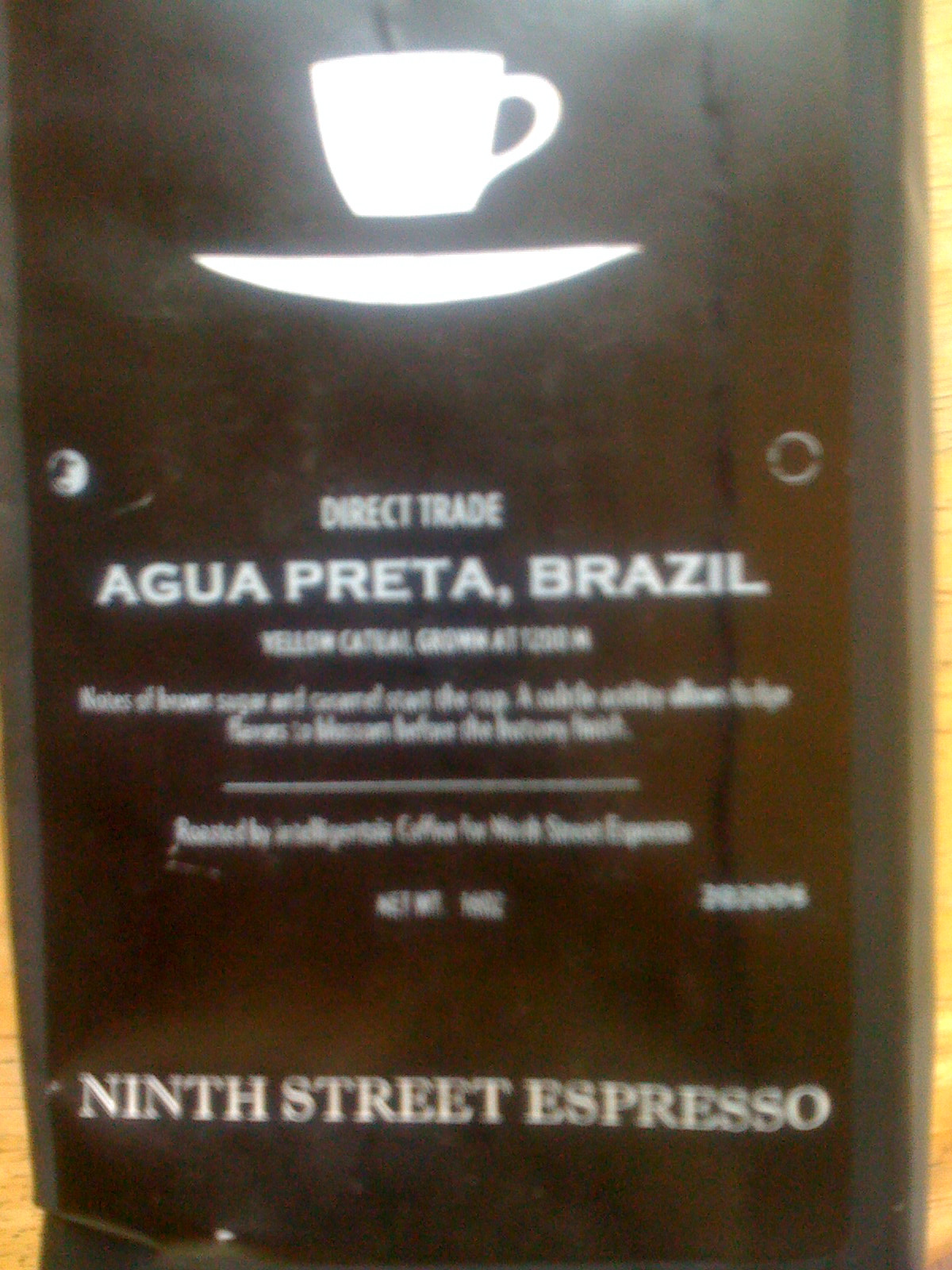 Earlier this week, my quest for a perfect cup of home-made coffee took me to Chelsea Market, where I picked up this direct-trade coffee from the outpost of Ninth Street Espresso at the market. This was part of my at-home vacation, or staycation, which mostly entailed watching my daughter do gymnastics; taking her to a bookstore, a tea house, and a museum; reading some books; sharing fresh Belgian beer with some friends; working out; updating my Twitter status; and, of course, drinking coffee.
Name: Agua Preta, Brazil.
Earlier this week, my quest for a perfect cup of home-made coffee took me to Chelsea Market, where I picked up this direct-trade coffee from the outpost of Ninth Street Espresso at the market. This was part of my at-home vacation, or staycation, which mostly entailed watching my daughter do gymnastics; taking her to a bookstore, a tea house, and a museum; reading some books; sharing fresh Belgian beer with some friends; working out; updating my Twitter status; and, of course, drinking coffee.
Name: Agua Preta, Brazil.
Origin: Produced by Antonio Pereira de Castro and Glaucio Pinto of Fazenda Tijuco Preto in the Carmo de Minas region of Brazil.
Roasted: April 6 or8 by Intelligentsia.
Purchased: April 13 at Ninth Street Espresso, Chelsea Market, 75 Ninth Avenue, between 15th and 16th Streets.
Description: "A silky yet buoyant mouthfeel combines with notes of brown sugar and caramel to create an exquisitely delectable cup. A tamed acidity allows for notes of fudge to blossom right before the buttery finish."
In the cup: I was at first taken aback by what appeared to be a very old roasting date, which I just found in very tiny type on the price tag. But Ken Nye of Ninth Street Espresso has corrected me in the comments, noting that I was probably misreading the tag and that no coffees he sells are older than 12 days. I'm sorry I doubted. The coffee certainly tasted fresh.
This Yellow Catuai was grown at 1200 meters and harvested in August. Here is an excerpt from the tasting notes from Kyle Glanville, director of espresso at the roaster (full PDF is here):
Agua Preta is our first DT Brazilian coffee for filter, and this first lot comes from Fazenda Tijuco Preto, itself a two-time finalist in the Cup of Excellence competitions. Tijuco Preto is blessed with natural springs and a high-altitude plateau that makes harvesting cherries an efficient and easy task. This pulped natural coffee offers striking balance and drinkability with soft acidity, a perfect cup for a lazy morning with the paper.
Well, where to begin. I've been drinking this as espresso for much of the week. This morning I tried it as a regular coffee. Setting aside my ambivalence about the term "mouth feel,' it was definitely silky in both cases. I don't know about buoyant. The acidity is low, though the espressos were slightly more acidic. The hints of chocolate, caramel and fudge were there, more or less, especially in the espresso version, but the finish -- I guess it is buttery -- it is most noticeable in the filter version for some reason. Is "buttery" really the right word? Oh, I suppose. It's a tasty cup of joe.



